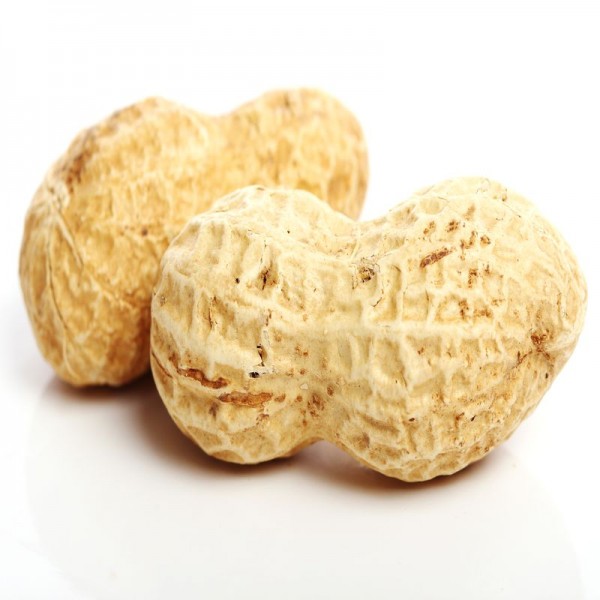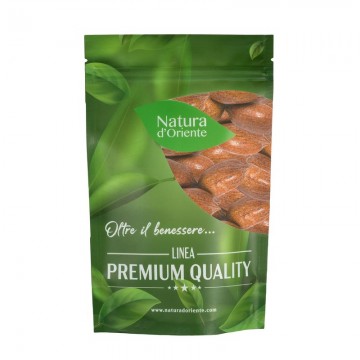The popular peanuts have been demonized and often considered a 'b' food even compared to the rest of dried fruit, actually if consumed in the right way too peanuts can be beneficial in the diet.
Roasted peanuts properties and benefits
For peanuts, the same argument applies to all dried fruit, several calories (even if they do not hold the category record), a lot of fats, but above all the good ones (monounsaturated and polyunsaturated). Good protein and antioxidant content . It is also right to remember the risks, one is induced and not inherent, we are talking about salt in roasted and salted ones, on the contrary, natural peanuts are very low in sodium. Another is allergy, in this case it must be said that it is not only a problem of peanuts but of all dried fruit, but if you are not allergic: go ahead. The third is to be careful to buy a quality product, if the peanuts are dark and covered with a patina, absolutely throw them and do not consume them because they can be toxic.
Nutritional values of roasted peanuts
One hundred grams of roasted peanuts contain 594 kilocalories, 48 grams of fat, 40 of which are polyunsaturated and monounsaturated and only 7 are saturated. The proteins are 17 grams and with a good amino acid profile (they are rich in arginine). Among the vitamins stand out the 14 mg of Niacin (b3) which represent 90% of the daily requirement, the 0.5 mg of Vitamin B6 (33%) and 97 micrograms of folic acid (or B9 equal to 49%). Among the mineral salts stand out the 634 mg of potassium (32%), the 363 mg of phosphorus (52%), the 178 mg of magnesium (47% ) and 2.8mg of zinc ( 28%).
History and cultivation
The hybridization that gave rise to the peanut as we know it took place in South America, perhaps even started 7600 years ago, the seeds found in an archaeological site it is not clear whether they are of a wild species or of Arachis hypogaea in the early stages of domestication. The hybrid should have originated in northwestern Argentina or southeast Bolivia. Many other diffusion centers spread throughout South America later originated. The Portuguese found peanuts for sale in the Tenochtitlan market. European merchants brought them to Europe, but it is in Africa (where they supplanted a similar local plant) and Asia that peanut cultivation has really taken off.
Today, in fact, the top four producing countries are in order: China (17.5 million tons), India (6.7 million tons), Nigeria (4.4 ) and Sudan (2.8). The United States follows in fifth place with 2.5 million. Data for 2019, world production that year was 48.8 million, so these 5 countries represented 69.5% of world production.
Roasted peanuts in the diet
As mentioned in the introduction, if used well peanuts can be a healthy food in the diet . The main risk is the excess of calories, the other risk is the salt in the salty ones. Among other things, if you consume the salty ones at the bar, it is likely that they will make you thirsty, which is appeased with sugary and caloric drinks in turn. But if, for example, you eat a right amount of roasted peanuts, the canonical 30 grams recommended for dried fruit and accompanied them with a fruit, the calorie intake is reasonable and it is a snack that is very satiating and of course you benefit from the quality nutrients that we have seen in the previous paragraphs.
Plant and fruit
The plant that produces peanuts (in English peanuts) is also called groundnut that is a nut that grows on the ground. It is in fact a herbaceous plant that grows up to about half a meter. The genus Arachis to which the plant belongs (Fabaceae or Leguminosae family) is endemic to South America but the species cultivated for the production of peanuts is actually not natural, it was created by the hybridization of two wild species. Probably the two species were Arachis duranensis and Arachis ipaensis. The wild species derived from hybridization is Arachis monticola from which Arachis hypogaea was derived by artificial selection. The leaves have nictynastic movement, that is, they close at night. The flowers are small (1 / 1.5 cm) yellow with reddish veins. The fruit grows underground, from the flower develops a structure that penetrates the ground, this pod between 3 and 7 centimeters longit can contain from 1 to 4 seeds.
Using roasted peanuts in the kitchen
Peanuts in the kitchen as regards savory dishes are used in dishes typical of the extra-European tradition (African and Asian) but this time we have chosen a dessert that has the merit of avoiding throw away overripe bananas.
- Banana and peanut donut
- Ingredients for a 22 cm mold
- Bananas (the ripe pulp of 2 bananas) 240 gr
- Roasted and unsalted peanuts 35 gr
- 00 flour 100 gr
- Rice flour 100 gr
- Cane sugar 110 gr
- Eggs (about 2 at room temperature) 110 gr
- Buttermilk at room temperature 170 gr
- Powdered baking powder 10 gr
- Chia seeds 10 gr
- Salt 1 tsp
- For overcoating
- Dark chocolate 70 gr
- Cane sugar 70 gr
- Roasted and unsalted peanuts 10 gr
- Water 140 gr
- Preparation
1) Soak the chia seeds in the buttermilk for 4-5 minutes.
2) Meanwhile chop the peanuts with a knife and set aside.
3) Mash the bananas with a fork to make a puree.
4) Meanwhile, pour the eggs, sugar and salt into a bowl.
5) Whip the mixture with the electric whisk until it is clear.
6) Also add the banana pulp.
7) Continue to mix with whips and pour the buttermilk with the chia seeds.
8) Add the flours and yeast by sifting them through a sieve.
9) Combine the chopped peanuts and whip again for 1 minute.
10) Grease a donut mold with a diameter of 22 cm and 10 cm in height and pour the mixture inside.
11) Bake in a preheated static oven at 180 ° on the medium shelf for 40 minutes.
12) At the end of cooking, take the donut 16 out of the oven and let it cool for a few minutes.
13) Then unmold the cake, turning it upside down on a wire rack and let it cool for an hour at room temperature.
14) Meanwhile, finely chop the chocolate with a knife and transfer it to a bowl.
15) Pour the water and sugar into a saucepan without mixing, bring to a boil and let it boil for about 3-4 minutes.
16) Pour the syrup obtained over the chocolate and emulsify the sauce with an immersion blender, being careful not to create air bubbles.
17) Pour the icing on the donut.
18) Chop the peanuts for decoration and distribute them on the surface of the cake.
Recipe source: Giallozafferano Recipes









 No reward points for this product.
No reward points for this product.















